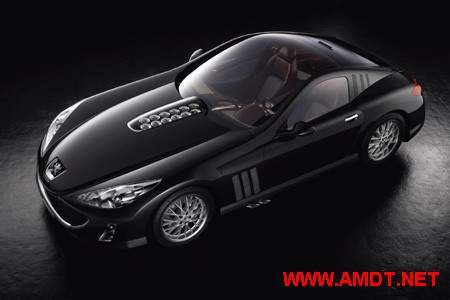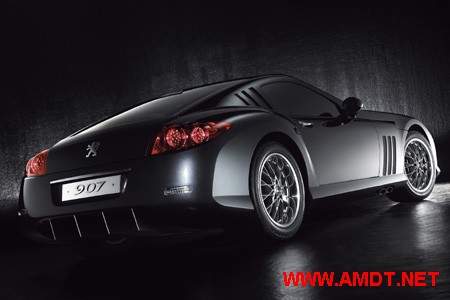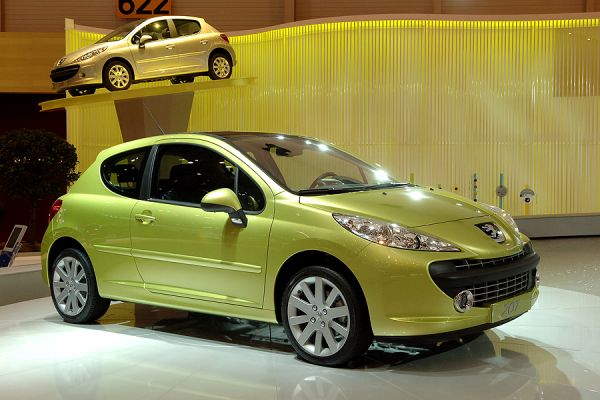高貴和英雄的象征 PEUGEOT
Peugeot History
The histories of the Peugeot family and of the company are directly linked to one region: eastern France, Montbeliard. The Lion, the emblem of the make, is also on the coat of arms of Franche-Comté, the birthplace of the family. Peugeot is an industrial adventure, but also a human one. It is the story of a family that was able to adapt to the changes of each age, while retaining a strong social conscience: setting up a savings bank, a mutual help organization; free treatment, insurance, hospitals, schools, a pension system, a 10 hour day, 33 years before it was law.
From the first tricycles to the latest models, the firm with Lion brand rapidly became one of the leading French manufacturers, before entering the international market. 
汽車(chē)歷史:
標(biāo)志家族以及汽車(chē)公司的歷史都與一個(gè)地區(qū)有直接的聯(lián)系:法國(guó)東部城市蒙貝利亞爾. 獅子,是標(biāo)志汽車(chē)的車(chē)標(biāo),也是對(duì)國(guó)徽的Franche-Comté,家庭的發(fā)祥地. 汽車(chē)產(chǎn)業(yè)是一個(gè)冒險(xiǎn),而且是一個(gè)人. 這是一個(gè)家族的故事,能夠適應(yīng)每個(gè)時(shí)代,同時(shí)又保留了強(qiáng)烈的社會(huì)良知:設(shè)立儲(chǔ)蓄銀行、互助組織; 特區(qū)護(hù)照免簽待遇、保險(xiǎn)、醫(yī)院、學(xué)校、退休金制度,10小時(shí)一天,33年前,人們的法律.
首先從最新型號(hào)的三輪車(chē),很快成為公司的品牌與獅子法國(guó)領(lǐng)導(dǎo)廠(chǎng)商之一,在進(jìn)入國(guó)際市場(chǎng). 
1810-1858
In 1810 the brothers Jean-Pierre and Jean-Frédéric Peugeot converted a mill into a steel foundry and plant for manufacturing saw blades, creating the company Peugeot Bros. This is the kick-off for the Peugeot family's industrial vocation. In 1858, the Lion brand is officially registered, activities become more industrialized and diversified: tools for all sorts of trades, household utensils, including the famous coffee grinders, sewing machines and various other items, including the frames for Second Empire crinolines.
Through hard work, tenacity and its innovative capabilities, Peugeot forges its reputation for quality and the robustness of its products。
1810年于勒和艾米爾雷托兄弟將工廠(chǎng)改裝成一個(gè)鋼鐵廠(chǎng)和鑄造廠(chǎng)制造鋸條刃片,開(kāi)創(chuàng)了標(biāo)志兄弟汽車(chē)。這是標(biāo)志家族汽車(chē)產(chǎn)業(yè)的使命的開(kāi)始. 1858年,石獅正式注冊(cè)商標(biāo),產(chǎn)業(yè)活動(dòng)更加多樣化和工業(yè)化:各種行業(yè)使用的工具、家庭用具,其中包括著名的咖啡機(jī)、縫紉機(jī)以及各種其他的項(xiàng)目,包括第二帝國(guó)車(chē)身的構(gòu)架. 經(jīng)過(guò)艱苦奮斗,堅(jiān)韌不拔以及創(chuàng)新的精神,標(biāo)志以其產(chǎn)品的質(zhì)量和穩(wěn)健享譽(yù)全球.
In 1960 Peugeot changed from being a specialist to a generalist: the production of classic sedans and small models.
1960年標(biāo)志汽車(chē)從專(zhuān)業(yè)化走向多樣化:生產(chǎn)小型轎車(chē)和經(jīng)典私家車(chē).
In 1974 the Peugeot Group acquired control of Citroen. The acquisition of the chevron brand was completed in 1976, giving birth to an automobile group with two distinct makes.
1974年,標(biāo)志集團(tuán)控股東風(fēng)雪鐵龍集團(tuán). 雪弗龍品牌的收購(gòu)已于1976年,誕生了由兩個(gè)完全不同的制造風(fēng)格組成的汽車(chē)集團(tuán)。
The second oil crisis in 1978 caused a crisis in the automobile industry, following three decades of growth. Peugeot decided to adapt itself without delay to an environment that had profoundly changed. This involved ensuring the long-term survival of the business, and maintaining its independence.
1978年第二次石油危機(jī),造成了汽車(chē)工業(yè)的危機(jī),經(jīng)過(guò)30年的發(fā)展. 標(biāo)志公司決定立即適應(yīng)環(huán)境并發(fā)生了根本的變化. 這涉及到確保企業(yè)的長(zhǎng)期生存并保持其自主權(quán).
1997 marks the start of a major industrial reorganization, with the adoption of a platform policy and shared industrial tools at Peugeot-Citroen. Each brand retained its name, personality and sales network. That was the beginning of a vast exercise in rejuvenating the range, starting with the 206, followed by the 607, then the 307, and most recently the 407 .
1997年開(kāi)始了一個(gè)重要工業(yè)的改組,在標(biāo)志-雪鐵龍集團(tuán)公司通過(guò)了共同綱領(lǐng)和共享工業(yè)工具,.保留了每個(gè)品牌名稱(chēng)、個(gè)性和銷(xiāo)售網(wǎng)絡(luò). 這是汽車(chē)行業(yè)一個(gè)龐大復(fù)興活動(dòng)的開(kāi)始,從206,到607,再到307以及最新的407。 
標(biāo)致1072006
車(chē)標(biāo)故事
1848年,阿爾芒•別儒家族在法國(guó)巴黎創(chuàng)建了一家工廠(chǎng),主要生產(chǎn)拉鋸、彈簧和齒輪等。1896年,別儒在蒙貝利亞爾創(chuàng)建了標(biāo)致汽車(chē)公司。1976年該公司與雪鐵龍汽車(chē)公司組成標(biāo)致集團(tuán),是歐洲第三大汽車(chē)公司。
The logo is the recognizable sign of a Brand, the visual expression of its values and its history. Through the lineage of the Peugeot logos find out about the history of the manufacturer.
這個(gè)標(biāo)志是一種品牌識(shí)別標(biāo)志,體現(xiàn)了它的視覺(jué)和歷史價(jià)值. 通過(guò)標(biāo)志商標(biāo)可以了解汽車(chē)制造商的歷史.
“標(biāo)致”(PEUGEOT)曾譯名為 “別儒”,公司采用 “獅子”作為汽車(chē)的商標(biāo)。 “標(biāo)致”的商標(biāo)圖案是蒙貝利亞爾創(chuàng)建人別儒家族的徽章。據(jù)說(shuō)別儒的祖先曾到美洲和非洲探險(xiǎn),在那里見(jiàn)到了令人驚奇的動(dòng)物—獅子,為此就用獅子作為本家族的徽章。后來(lái),這尊小獅子又成為蒙貝利亞爾省的省徽。
“標(biāo)致”這尊小獅子非常別致有口味,它那簡(jiǎn)潔、明快、剛勁的線(xiàn)條,象征著更為完美、更為成熟的標(biāo)致汽車(chē)。這獨(dú)特的造型,既突出了力量又強(qiáng)調(diào)了節(jié)奏,更富有時(shí)代氣息。
古往今來(lái),獅子的雄悍、英武、威風(fēng)凜凜被人們視為高貴和英雄,古埃及的巨大雕塑“司芬克司”,就是人首獅身,以代表法老的威嚴(yán)和英武。所以,標(biāo)致公司為使用“獅子”商標(biāo)而感到自豪。











